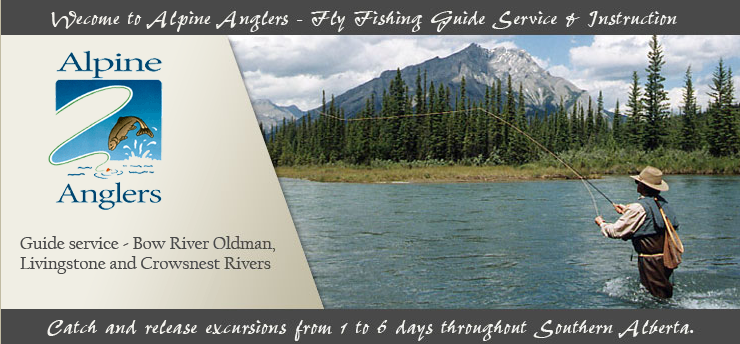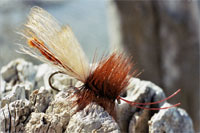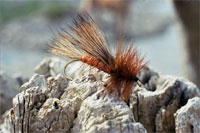GOLDEN STONE FLY ADULT

The Golden Stone is arguably the most significant hatch in Alberta rivers and streams. Certainly it is one of the more prolonged, lasting 2 months or more – from mid to late June until mid August and sometimes into September, depending on the water and the season. Goldens also populate many more streams than the other candidate – the giant stonefly, often referred to as the Salmon Fly.
Without going into a great long scientific treatise on these insects, following are the key facts:
NYMPH Facts:
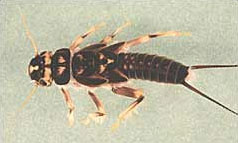
Golden Stone Fly Nymph
- Generally 20-38 mm in length.
- Incomplete metamorphosis (only has egg, nymph, then adult cycles with no pupal stage)
- Prefer, well oxygenated, moderate to fast waters.
- Live up to four years prior to emergence
- Carnivorous (feed on other nymphs, larval stages of other insects)
- Poor swimmers. An interesting note is that the golden stone will arch its back and splay its legs when swimming, looking to grab the nearest structure. This will show off its generally tan-grey abdomen and, thick legs. This is different from the giant stone (salmonfly) nymph that will curl into a ball upon perceived threat.
- Most vulnerable during emergence. Nymphs will crawl from the deeper, faster water into calmer shallows awaiting evening to emerge from the stream.
- Trout will key on the “migration” (in many streams nymphs will emerge in lower reaches first then move their way upstream in emergence) and will flip rocks with their tails and snouts to dislodge and feed on them. Trout will cruise the shallows of calm water or hold in shallower seams at the edge of faster water awaiting nymphs to arrive or be swept downstream.
ADULT Facts:
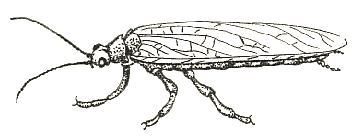
- Emerge from the nymphal cases after crawling onto trees, shrubs, rocks, or other structure close to the stream.
- Crawls to cover as the wings dry prior to flying into the tree canopy.
- Mating occurs during the afternoon 1-2 days after emerging
- Females deposit their eggs in the water during the mid day heat when they are most active. Females flutter above the water then crash down, slamming their abdomen to the water and then flutter back, repeatedly until all the eggs are knocked free of their abdomen.
- Trout often chase the egg- laying females at the start of the hatch but wise up as the hatch progresses and begin to focus on dead or dying adults that will not fly away- an easier meal.
At the beginning of the hatch, trout are very excitable. Huge bugs bomb the runs and trout will attack with a vengeance. They will often chase a stonefly many feet and attack it with a vigorous splashy slash. Once caught several times or having felt the sting of a hook or are well fed, they begin to feed on easier meals. No longer will they look for the fluttering females, but they will await the dead or dying adults.
Tactics:
Nymphs:
6-8 weight rods; 2-3X tippets on 6-9 foot leader tippets with extra weight as needed to get the fly to bottom bounce (remember, these are crawling bugs). Indicator should twitch as it drifts, indicating you are ticking bottom and be set about twice the depth of water you are fishing.
Adult:
Suggested set up uses 4-6 weight rods with 3x tippet on 9 -10 foot leaders. When casting across currents lengthen leader/tippets to 12 feet to allow for reach mends. Be prepared for some vicious takes on these the T bone steaks of trout food.
Cast along troughs or depressions or any seams along banks, logs, rocks, undercuts, rock walls, etc.
Anytime during stonefly season, even if no adults are flying or on the water, fish may still be looking for adults.
Stonefly patterns are always a good “searching” pattern. Skate them, skip them, twitch them, drift them dead drift. When stoneflies are present and trout are feeding on them, any one of these methods may elicit a response.
A couple of flies to consider
